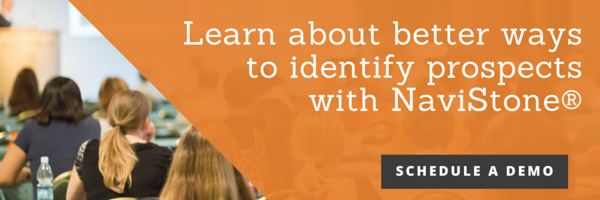In this episode of Who's Mailing What, Paul Bobnak, Direct Mail Evangelist, chatted with Angie Arnspiger, VP, Business Development of NaviStone. Listen in and get the...

Your data is worth more today than ever before!
About seven months ago Oracle announced their purchase of Datalogix for $1.2B. According to Forbes, the price was an astounding 9.6 times revenue. I can’t tell you the multiple of earnings, because the same article reported that Datalogix wasn’t profitable.
Using offline data to personalize what someone sees online, and then tracking results back to offline purchases, was the driving force behind this transaction. Four recent changes in the world made this possible:
- Technology changed. An advertiser can use an email address or a physical address to target online advertising at a particular individual across multiple websites. Rather than advertising to all visitors on a website, or to everyone searching for a keyword, you can create an audience of individuals and show ads just to them across a variety of websites. This is different than retargeting, which requires a visit to your website to create an audience. Want to display a particular message to your next door neighbor while they browse the web? It’s now possible (though not recommended).
- Data changed. Databases similar to the old NextAction and Abacus now exist in other categories. This has significantly enriched the number of transactions and transaction value known to be associated with a consumer. In addition to the retailer data at the core of the co-operative databases, Datalogix also houses consumer purchase data for 50+ grocery store chains and 99% of all cars purchased in the US.
- Web behavior changed. More than 50% of all transactions today are influenced by web browsing, despite the fact that more than 93% of these transactions take place offline.
- Online advertisers changed. Consumer Packaged Goods (CPG) and Automotive companies, which make up much of the top 100 US advertiser list, are now focused on using data and digital advertising to target their customers and prospects directly.
Oracle provided several examples of advertising programs powered by Datalogix to explain the acquisition. None of the examples were about creating prospect lists for catalogers. Most went something like this: “Datalogix used grocery store data to create an audience of shoppers known to buy Dr. Pepper and other carbonated beverages. They transferred this audience to Facebook and ran digital ads for Dr. Pepper to this audience. They then used the subsequent grocery store data to measure how many of the people they advertised to actually purchased Dr. Pepper, proving a 3 to 1 Return on Ad Spend (which must be good in that industry or they wouldn’t have bragged about it in a case study!).”
The large budgets of the top 100 advertisers drove the price for Datalogix. The amount of money the average cataloger spends annually on marketing is a rounding error compared to the ad budgets of companies like Coca Cola, Nike and Ford. But without shopping data on individuals, the ability to connect individuals to cookies online, and an inventory of page views available for dynamic advertising, the Datalogix deal would not have happened.
And that’s where an opportunity exists for catalogers to cash in on the advertising appetites of those top 100. In other industries, companies are paid well for providing data. Grocery store chains make a killing selling their data back to brands. Because of the changes mentioned above, the time is ripe for catalogers to cash in as well. Here’s how:
- Companies like LiveRamp pay for data that allow them to connect individuals to a cookie id. Catalogers are a rich source of this data. Every time someone places an order online, enters an email address on your site or even clicks through an email, you can match a cookie to an individual. If you’re big enough, you can sell your data directly to LiveRamp. If not, check with your list manager. ALC has a nice program in which they sell this data on behalf of their clients.
- Ask your database co-op if they will pay you (or give you a list rental credit) for providing an email address with your customer and transaction files. An email address is not necessary to create a prospect model, but is very useful in connecting a cookie id to an individual consumer. Facebook, for example, uses email address as a connector. If the co-op is willing to pay, then provide it. If not, then make sure you aren’t sending email addresses for free as part of your standard data feed.
- Test whether it makes sense to sell some of your page views to advertisers. You spend a lot of money driving traffic from catalogs, SEO, SEM, etc. Your traffic is highly connectable to an individual. In our projects we see connection rates (cookie to individual consumer) of over 50% for a typical catalog/ecommerce website…this is substantially higher than the average content website. Those top 100 advertisers have money to spend and need page views that can connect to an individual. Use Optimizely or some other software to conduct an A/B split test to see what outside advertising does to your conversion rate. One suggestion…you don’t have to sell all your traffic. Identify your low converting traffic sources, pages and devices and test selling only that traffic. Google is an easy place to start selling page views, but there are many more options. Contact Matt Wrhel (mwrhel@cohereone.com) if you’d like help with this.
There was a time when catalogers made significant money from list rentals. The advent of the co-ops significantly reduced that revenue stream. Today there is a rapidly growing market for the kind of data and web traffic catalogers can provide. You just have to seize the opportunity.

